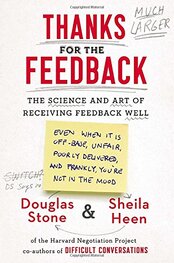 In 1914 a group of twenty eight men, led by famed explorer Sir Ernest Shackleton, set sail aboard a ship known as "The Endurance." Little did they know that their journey to the South Pole would be one in which they would navigate through extremely treacherous obstacles. "Endurance: Shackleton's Incredible Voyage" is a true tale of the incredible maritime adventure that Shackleton and the crew of The Endurance experienced as they set sail for the South Pole, but were later shipwrecked in the Antartica, forced to traverse the harsh environment of the Antartica on foot and eventually dangerously set sail, on open lifeboats, through the tumultuous waters of the Drake Channel, to make it back home. To better understand how this journey began it is important to look at the context in which it was initiated. This period of time was one of great exploration and Shackleton being an adventurous explorer was a veteran of two expeditions, both of which were failed attempts to be the first person to reach the South Pole. However in 1911 Roald Amundsen beat Shackleton to the chase and became the first person to sail to the this destination. Determined to make his own mark and set a new exploration record, Shackleton set his sites on becoming the first person to cross the length of Antartica. To do this his ship would have to sail to one end of Antartica and then he and his crew would get off and travel for approximately 1,800 miles across the continent to reach the coast on the opposite side. However the expedition did not go as planned and the ship became trapped in densely packed ice. After having exhausted a huge amount of resources, time and man power in trying to get the ship untangle from the ice. Shackleton finally decided to extinguish the ships engines and to let the it drift in the waters in hopes that it would drift closer to the continent. This was not the case however and despite initially drifting towards the continent the ship eventually started drifting further away and after over ten months of not making any significant progress through the ice, The Endurance succumbed to the wear and tear placed on it by the ice pack and began to sink. Shackleton and his crew were forced to abandon ship and continue the journey on foot. This left the crew stranded in one of the most treacherous and remote environments on earth. They were forced to face some of the harshest environmental conditions for over two years, and by only their wits and determination to survive were they able to overcome the impossible. This book not only gave me a first-hand perspective of the incredible dangers and hardships of polar exploration, it also gave me a glimpse of the great resilience and leadership skills that Shackleton and his crew demonstrated. Leadership skills such as having vision and passionately working hard to accomplish this vision, despite facing monumental obstacles. Having grit and the mental fortitude to keep pushing forward despite seeing little to no progress, but at the same time being smart enough to know when a cause was lost and having the flexibility to pick up the pieces and pivot to another course of action when faced with an insurmountable roadblock. Shackleton and his crew's experience is a true testament to the power of hope and the strength, courage and perseverance of the human spirit. Despite numerous setbacks and years spent in harsh conditions, isolated from the rest of the world they pressed on and eventually not only accomplished the mission they had set out to accomplish but also all of them made it back home from the mission. The power of having hope, determination and positive thinking in the face of despair are some of the many lessons found in the pages of this very gripping book.
3 Comments
 How important is feedback for personal and organizational growth and is there a wrong and right way to give and receive it? Feedback plays a key role in improving performance, without it there is no way of accurately knowing how good your performance is. In essence it provides a breakdown of what you are doing right as well as what you need to work on in order to excel at the tasks required of you. Nonetheless despite its importance feedback isn't always given or received properly. Through the pages of “Thanks for the Feedback” Sheila Heen and Douglas Stone do a great job of navigating the complexities of giving and receiving feedback and on completion of the book readers will no doubt be left with a better understanding of, and appreciation for, this topic. A key theme and message in the book is the importance of adopting a “Growth Mindset.” An individual or organization with a such a mindset is one who views themselves as progressively improving with each future evolution of themselves, being a more improved version of themselves. Constructive feedback is therefore welcomed and even sought after by such a person, after all, in their goal to attain excellence, knowledge of where they currently stand, performance-wise, helps them know what improvements they need to focus on. In regards to appropriately receiving feedback here are the key takeaways I got from the book:
As concerns giving appropriate feedback, the key takeaways I got from that book are:
On conclusion of the book I was left with these key takeaways and realized the important role that feedback can play in improving personal and team performance. Incorporating the right approach on giving and receiving feedback into your lifestyle or your organization’s culture is no doubt a step in the right direction. Thank you Sheila Heen and Douglas Stone for providing guidance, through the pages of this book, on how to tap into this very powerful and ever available resource called feedback. |
AuthorI am forever a student, who loves learning new things, sees art in science and science in art, is passionate about and appreciates the simple things in life and has a great disdain for wearing socks. Archives
March 2024
Categories |

 RSS Feed
RSS Feed
